John Hurrell – 21 February, 2025
Games (with their agreed upon sets of rules) are a salient reference point in these densely layered and raw, murky productions, but not as a participatory invitation for viewers. Instead a politically loaded compositional structure-sometimes packed with turbulent marks—one that you peer through to look at comments on the gleefully destructive activities of hawkish foreign policies and the associated bored super-rich like Trump or Musk: narcissistic exhibitionists who insatiably thirst for more power, land, or wealth.
First of all, it is impossible to get a genuine sense of the materiality of these big Rauschenberg-style paintings through online photographs. They exude a scungy dribbly manuality (that actually is exceptionally raw) oddly featuring a soft un-industrial feel, a wet or powdery bodily tactility that often ignores hard edged precision. This is even though they are based on board games (like Snakes and Ladders or Ludo, or paper ones like Noughts and Crosses) and reference the use of dice and moveable counters and the lust to control everything… and I mean EVERYTHING!
Games (with their agreed upon sets of rules) are a salient reference point in these densely layered and raw, murky productions, but not as a participatory invitation for viewers. Instead a politically loaded compositional structure-sometimes packed with turbulent diagonal marks—one that you peer through to look at comments on the gleefully destructive activities of hawkish foreign policies and the associated bored super-rich like Trump or Musk: narcissistic exhibitionists who insatiably thirst for more power, land, oil or wealth. Here, with the show’s explicit title, the focus is on land.
The clotted jammed-up imagery often features old maps (details of the Middle East) underneath, and whilst calculatedly rough, messy and loose, is pointedly tweaked to incorporate an aggressive geo-political global context, focussing on the continuing consequences of what Yeldezian sees as US militarism.
Yeldezian is less tidy than his forebears Rauschenberg and Warhol (whom he directly quotes), being not so interested in silk-screening. His works are densely painted, deliberately cluttered and layered, often hand-drawn, but not constantly screened. And many use grids for compositional organisation. The use of bold runny colours and some well known appropriated motifs keep the paintings lively.
He is preoccupied with US military aggression, and although we can laugh (as we do) about the transparent stupidity of an ‘emperor’ like Trump, especially when he is talking about annexing Greenland, Yeldezian certainly isn’t. Like most of us, he is alarmed. Very!
But the oozy paint here. There is so much of it. It seems overkill and overworked, despite the pertinence of mapped territories peeking through from below. It is strange seeing these very simple games ossified, buried under crusty pigment, when normally the used piece of paper in say Noughts and Crosses is quickly chucked away.
Lots of contemporary art references are apparent, such as Warhol, Polke, Lichtenstein, and Wool—from a distance but strangely not so much close up. That peculiarity interests me, not ‘the look’ but the change in perception that occurs when you confront the detail. Its inherent individuality. Yeldezian’s presence that is overt.
John Hurrell
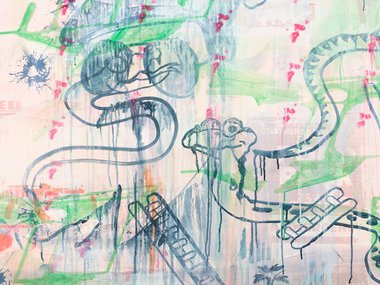
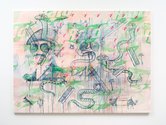
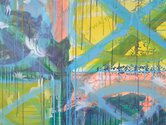
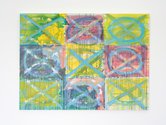
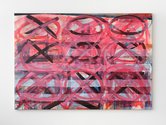
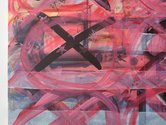
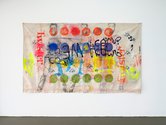
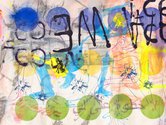
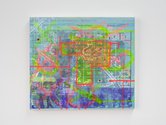

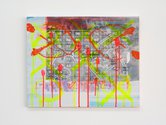
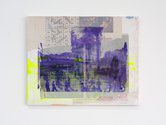
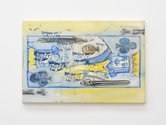
 Two Rooms presents a program of residencies and projects
Two Rooms presents a program of residencies and projects Advertising in this column
Advertising in this column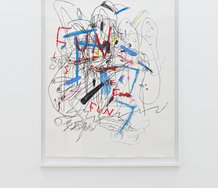

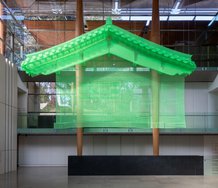
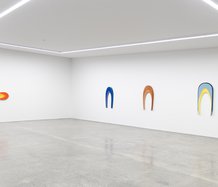
This Discussion has 0 comments.
Comment
Participate
Register to Participate.
Sign in
Sign in to an existing account.